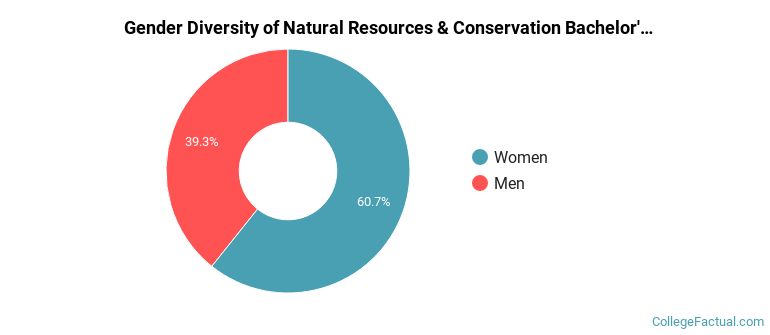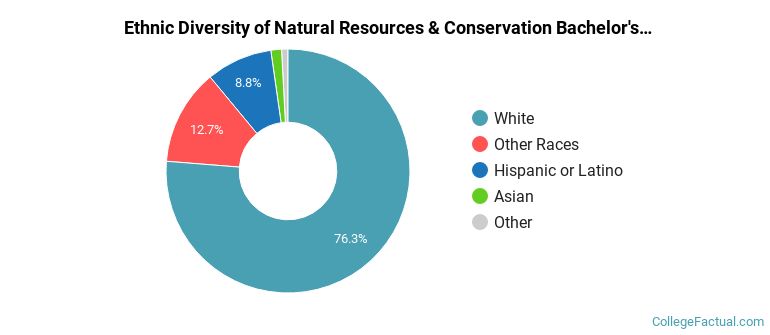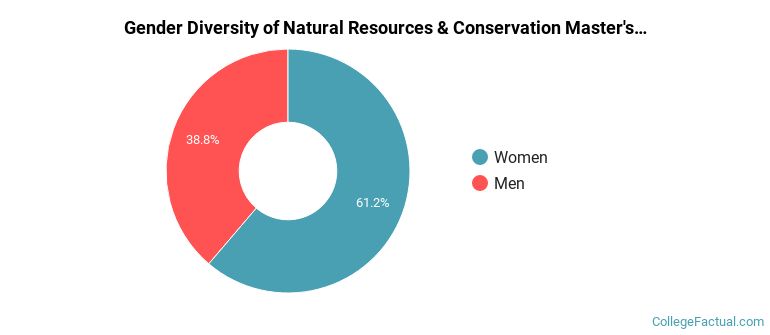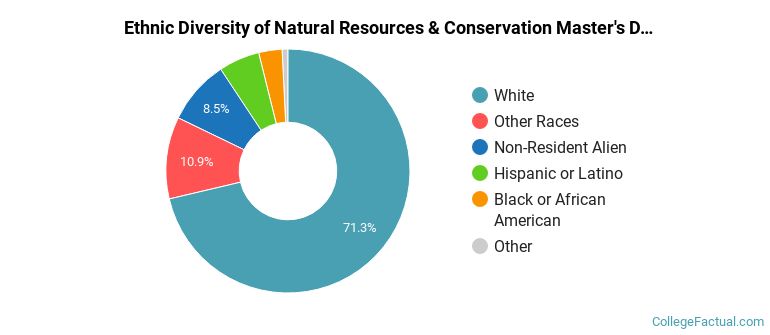 by our College Data Analytics Team
by our College Data Analytics TeamGo directly to any of the following sections:
The bachelor's program at Oregon State was ranked #40 on College Factual's Best Schools for natural resources & conservation list. It is also ranked #2 in Oregon.
During the 2021-2022 academic year, Oregon State University handed out 354 bachelor's degrees in natural resources & conservation. This is a decrease of 2% over the previous year when 361 degrees were handed out.
In 2022, 116 students received their master’s degree in natural resources & conservation from Oregon State. This makes it the #6 most popular school for natural resources & conservation master’s degree candidates in the country.
In addition, 18 students received their doctoral degrees in natural resources & conservation in 2022, making the school the #5 most popular school in the United States for this category of students.
During the 2022-2023 academic year, part-time undergraduate students at Oregon State paid an average of $729 per credit hour if they came to the school from out-of-state. In-state students paid a discounted rate of $245 per credit hour. Information about average full-time undergraduate tuition and fees is shown in the table below.
| In State | Out of State | |
|---|---|---|
| Tuition | $11,145 | $33,315 |
| Fees | $2,349 | $2,349 |
| Books and Supplies | $600 | $600 |
| On Campus Room and Board | $15,075 | $15,075 |
| On Campus Other Expenses | $3,036 | $3,036 |
Learn more about Oregon State tuition and fees.
During the 2021-2022 academic year, 354 students graduated with a bachelor's degree in natural resources & conservation from Oregon State. About 39% were men and 61% were women.

The majority of the students with this major are white. About 76% of 2022 graduates were in this category.
The following table and chart show the ethnic background for students who recently graduated from Oregon State University with a bachelor's in natural resources & conservation.

| Ethnic Background | Number of Students |
|---|---|
| Asian | 5 |
| Black or African American | 1 |
| Hispanic or Latino | 31 |
| White | 270 |
| Non-Resident Aliens | 2 |
| Other Races | 45 |
Online degrees for the Oregon State natural resources & conservation bachelor’s degree program are not available at this time. To see if the school offers distance learning options in other areas, visit the Oregon State Online Learning page.
In the 2021-2022 academic year, 129 students earned a master's degree in natural resources & conservation from Oregon State. About 61% of these graduates were women and the other 39% were men.

The majority of the students with this major are white. About 71% of 2022 graduates were in this category.
The following table and chart show the ethnic background for students who recently graduated from Oregon State University with a master's in natural resources & conservation.

| Ethnic Background | Number of Students |
|---|---|
| Asian | 1 |
| Black or African American | 4 |
| Hispanic or Latino | 7 |
| White | 92 |
| Non-Resident Aliens | 11 |
| Other Races | 14 |
Take a look at the following statistics related to the make-up of the natural resources & conservation majors at Oregon State University.
Natural Resources & Conservation students may decide to major in one of the following focus areas. Individual majors may not be available for all degree levels.
| Major | Annual Graduates |
|---|---|
| Natural Resource Management | 182 |
| Natural Resources Conservation | 158 |
| Fisheries Sciences | 138 |
| Wildlife Management | 81 |
| Forestry | 57 |
| Natural Resources Conservation (Other) | 15 |
| Related Major | Annual Graduates |
|---|---|
| Engineering | 1,353 |
| Biological & Biomedical Sciences | 442 |
| Agriculture & Agriculture Operations | 404 |
| Physical Sciences | 200 |
| Mathematics & Statistics | 134 |
More about our data sources and methodologies.